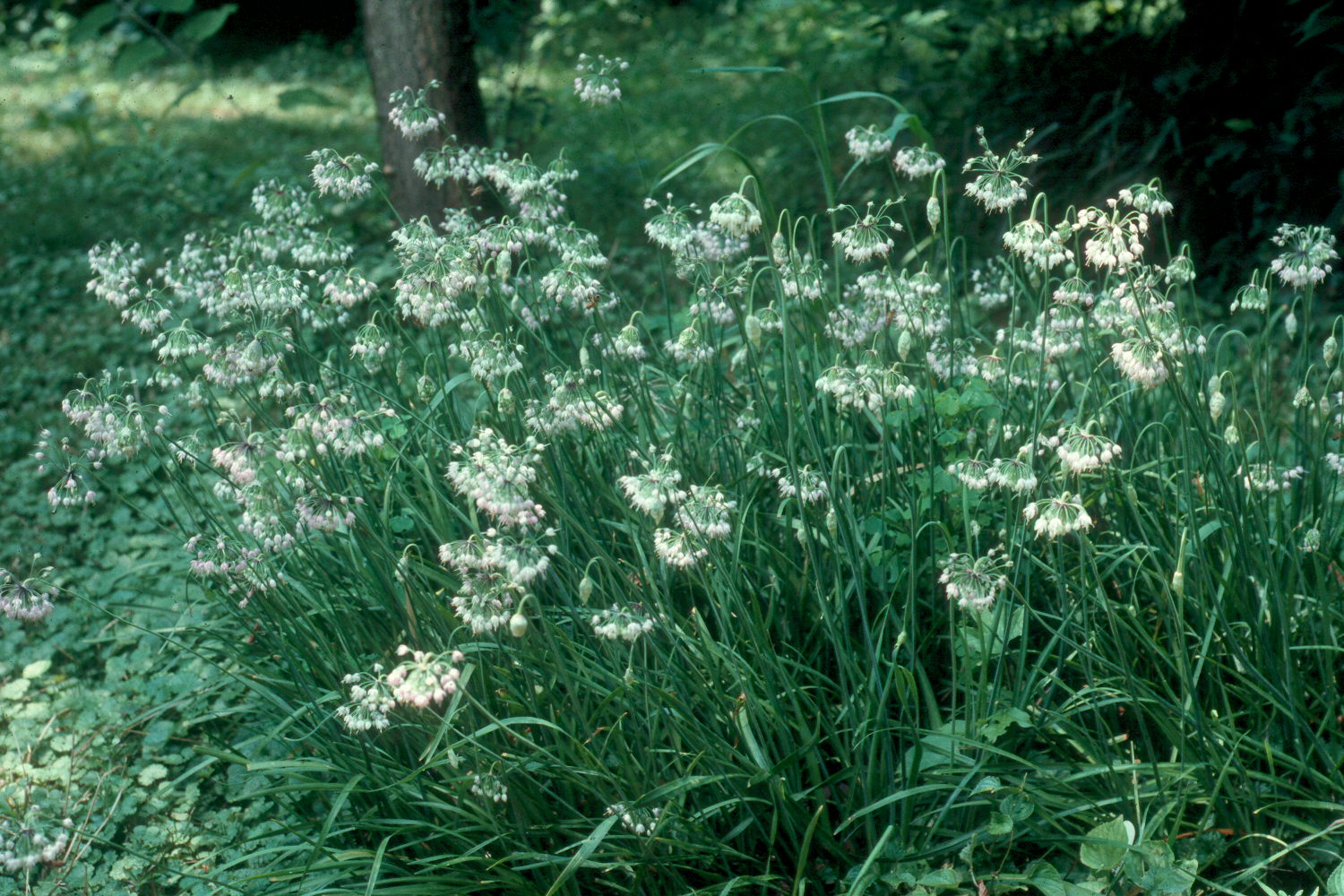
*Allium cernuum.
Nodding onion. This nodding pink onion is native to shale barrens, so
is able
to cope with dry soils and heat. Blooming in June and July, it is just
18” tall
with attractive narrow blades.. The bulbs are edible. For full sun to
light shade.
Propagate by seeds or division of clumps of bulbs.
Allium
‘Pink Star’. A
starburst of pale pink flowers on 2’
plants. In my garden it has spread to form sweeps of thin foliage and
large
flowers in July and August. Full sun or light shade. Easy to divide the
clumps
or even move them in bloom.
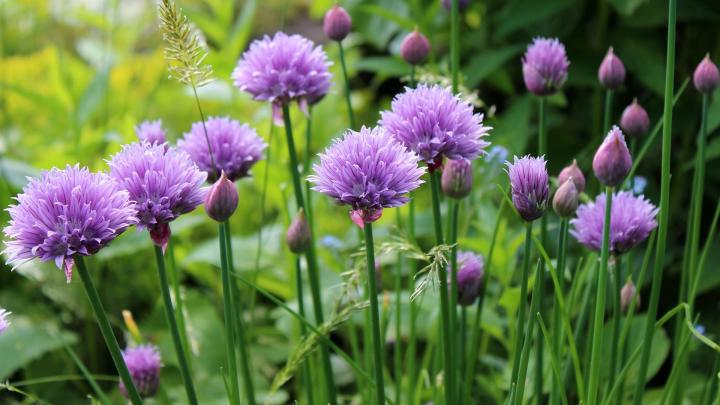
Allium
schoenoprasum.
Chives. Yes, this is usually
classified as part of the herb garden, but the lovely lavender flower
heads
pair well with coreopsis and sundrops. Both the flowers and the narrow
hollow
leaves are edible. At 18” it never needs staking. Propagate from seed
or
division.
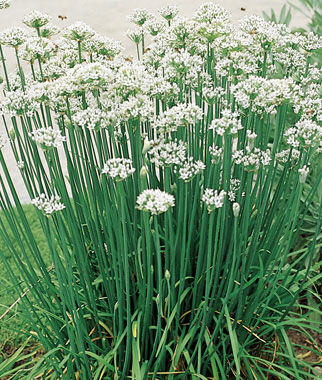
Allium
tuberosum.
Garlic chives. The white flowers on 2’ stems also
hail from the herb garden but are so pretty they can go to the flower
bed.
Blooming in late summer, easy to grow from seed or bulbs, and like all
the
onions, of no interest to deer and rabbits.
*Agastache
foeniculum. Anise hyssop. Spikes of light purple flowers on
3’ plants,
blooming all summer. This mint family perennial makes good tea and is
irresistible to butterflies and other pollinators. It does not spread
out of
control like other mint family plants. From seed. Full sun, dry soil.
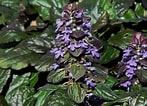
Ajuga
‘Bronze Beauty’. Blue
bugle. This easy to grow
groundcover sports dark purple basal foliage all winter, making it
lovely in
the winter months. Then in April it sends up 10” spikes of blue just as
the
daffodils are blooming. Pick up rooted stems and move them to wherever
you want
more. Sun or shade.
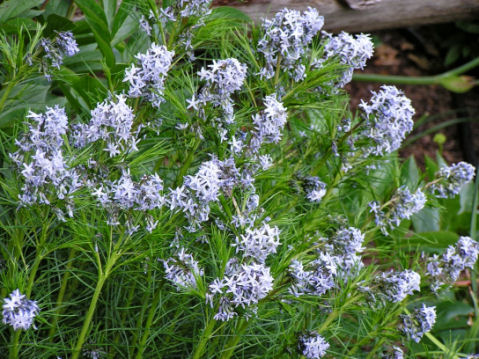
*Amsonia
hubrechtii.
Thread-leaf bluestar. Many heads of
blue star flowers in May and June followed by great glowing yellow fall
color.
The tall plants (3-4’) need no staking and perform well in dry, rocky
soils in
full sun or light shade.
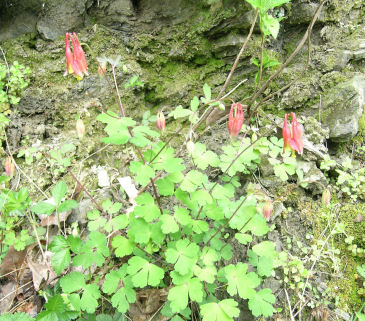
*Aquilegia
canadensis.
Columbine. This cheerful red and yellow
native of dry, rocky woods and meadows has a deep taproot which makes
it good
for dry slopes. Blooming in April and May, it attracts hummingbirds as
well as
other pollinators. Blooms at 2’ with pretty meadow rue leaves. Grows
easily
from seed.
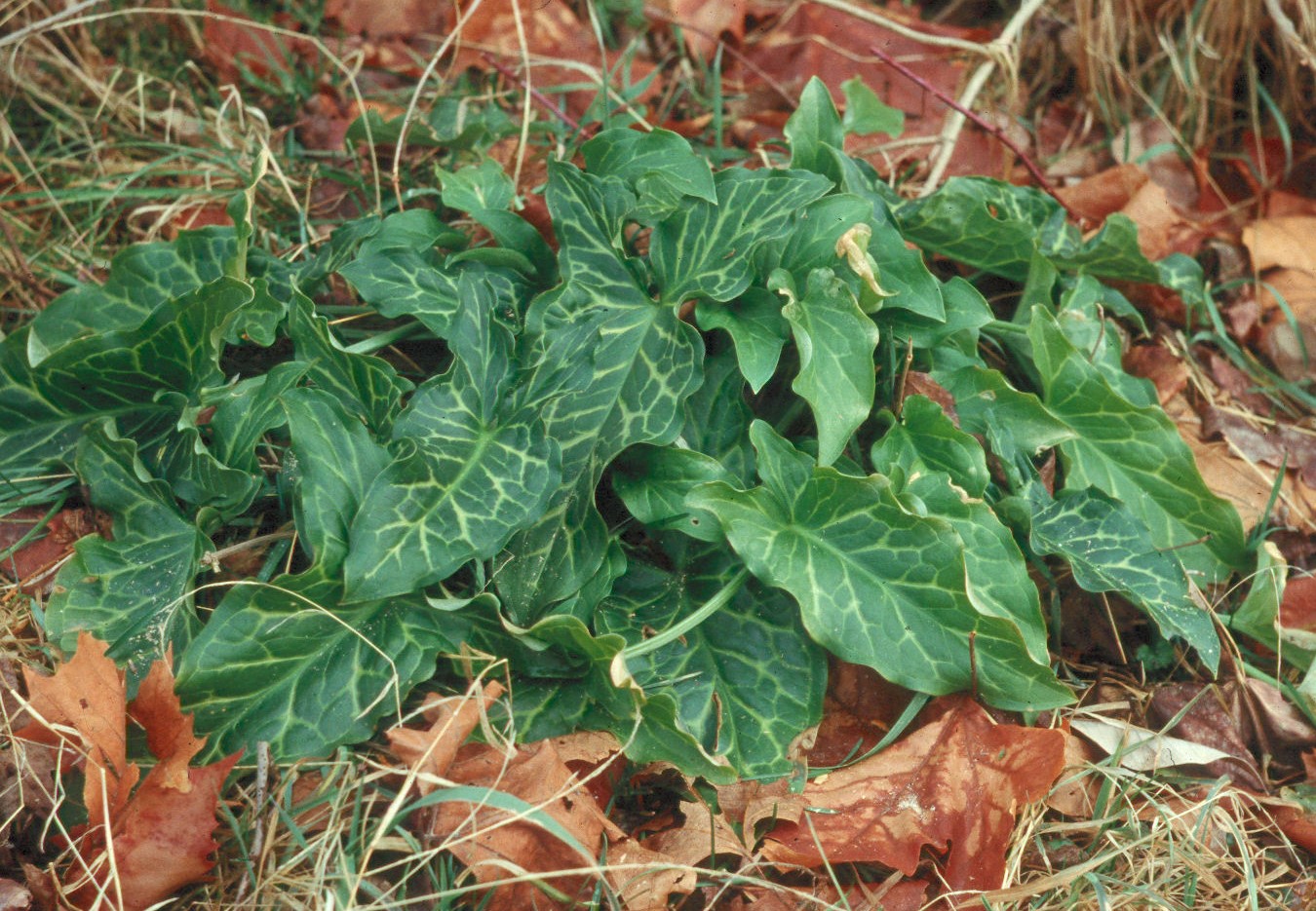
Arum
italicum f. pictum. Lords
and ladies. Mottled leaves
produced in the fall are attractive in the winter landscape, followed
by hooded
flowers and spikes of bright orange berries in spring. Then the plant
goes
dormant until another year. A winter ground cover, unpalatable to deer.
Dry
shade, 18” tall.
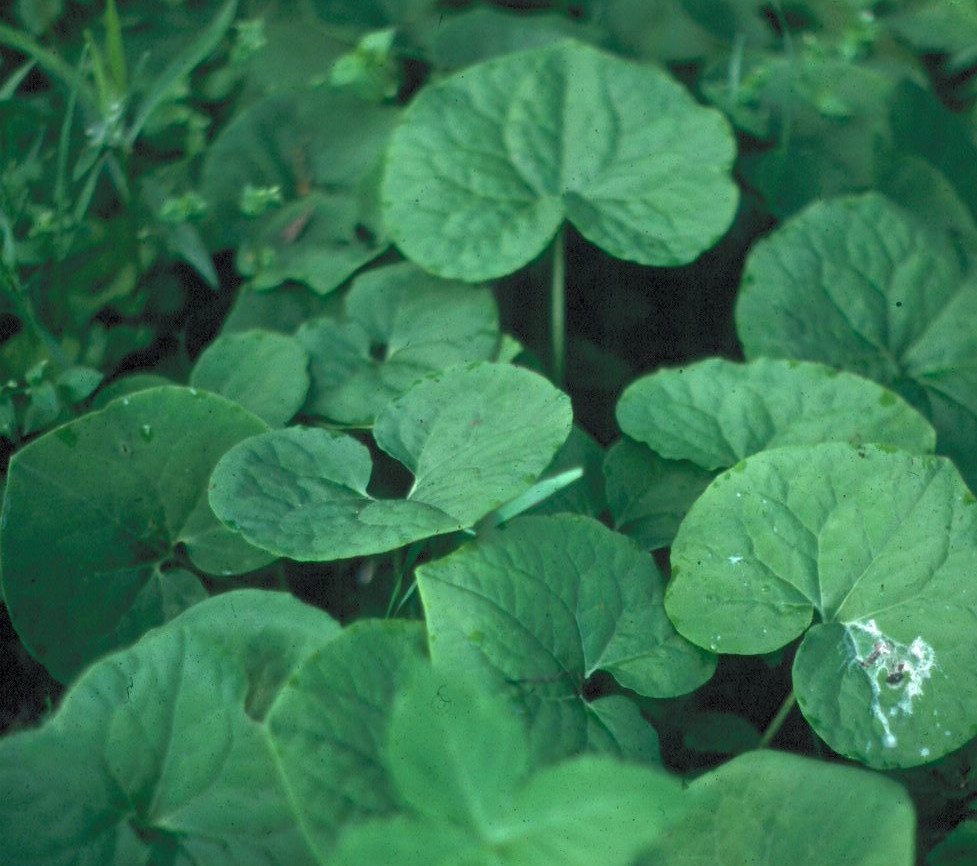
*Asarum
canadense. Wild
ginger. This native ground cover
produces purple spiky flowers at ground level, where ants seek out the
sweet
fleshy seeds. That’s how it spreads. At 6” tall, it has mat green
leaves and
is great for dry shade. Divide the stems and replant runners.
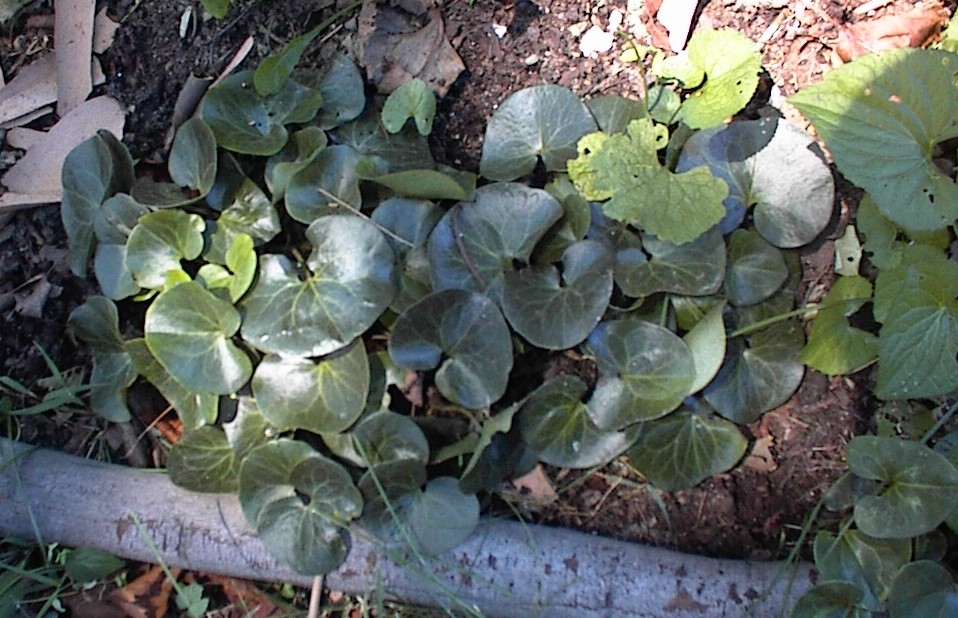
Asarum
europaeum.
European wild ginger. The shiny leaves of this
European counterpart to our native ginger is equally fine in the
woodland
garden. The plants do indeed smell like culinary ginger and were
supposedly
used that way by early settlers. Maybe.
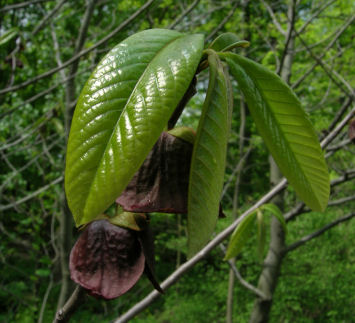
*Asimina
triloba. Pawpaw.
This small understory tree or shrub grows
15-20’ tall. It is found in low bottom woods and along streams. It’s
really a
tropical species but is perfectly hardy. The tree sends out root
suckers to
form thickets, so is not a good candidate for a lawn specimen. You need
two
different one for fruit, which is a green sweet custard type ripening
in
October. Sun or shade, moist soil..
Athyrium
angustum f. rubellum.
Lady in red fern. This gorgeous fern
grows 18-30” in shade or deep shade or even sun, with adequate
moisture. The
real beauty is the red stems in contrast to the lacy foliage. No pests
or
diseases. No deer.